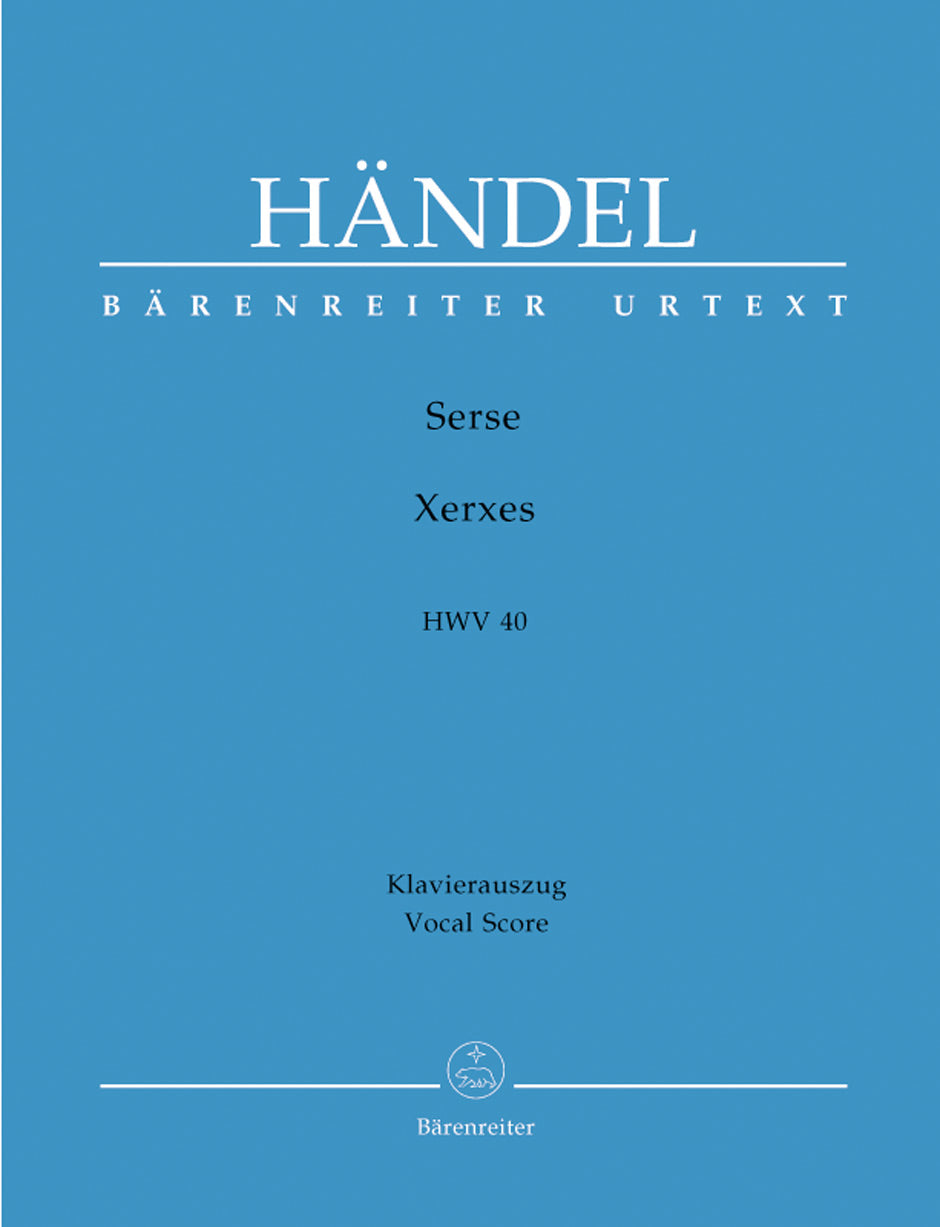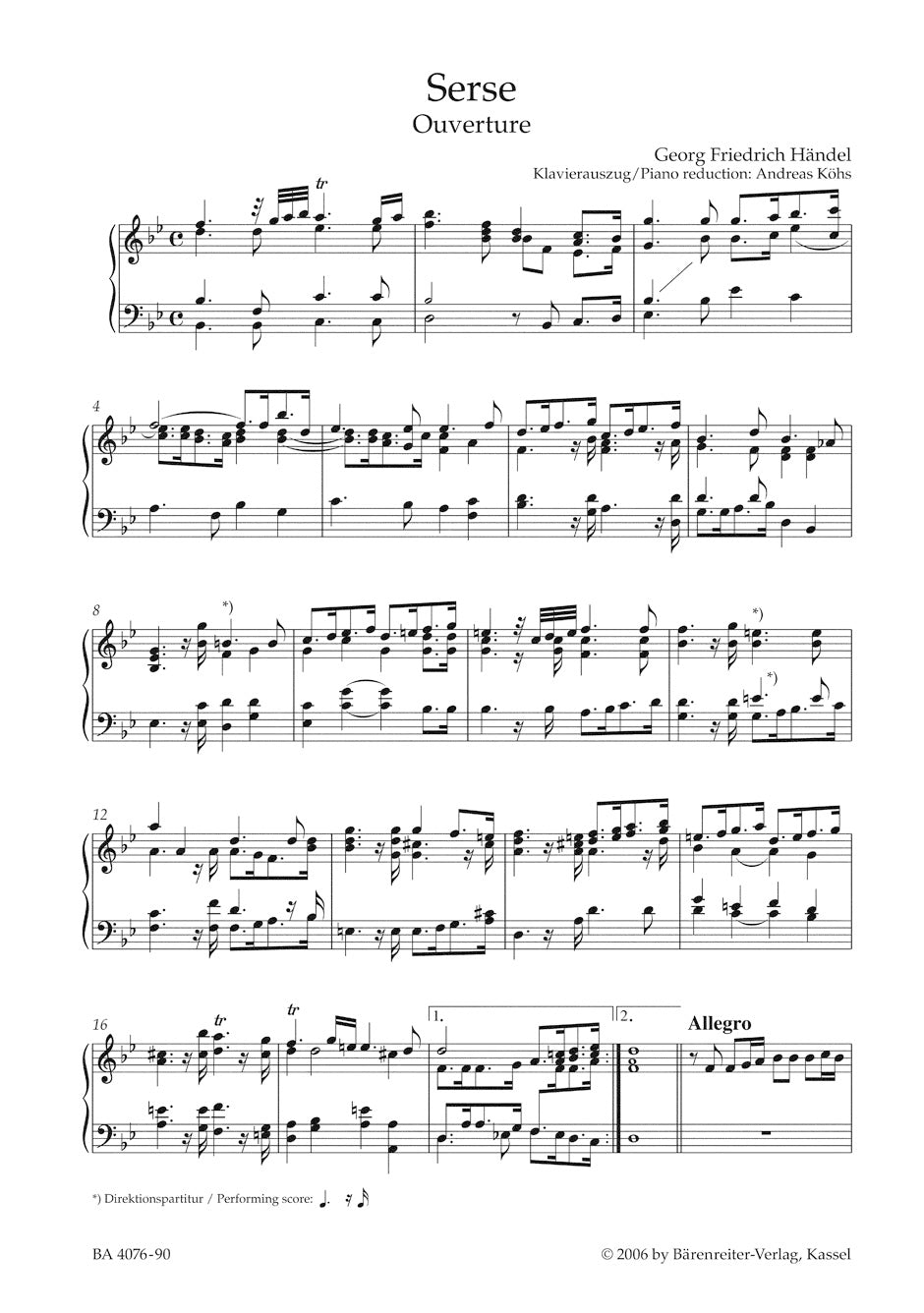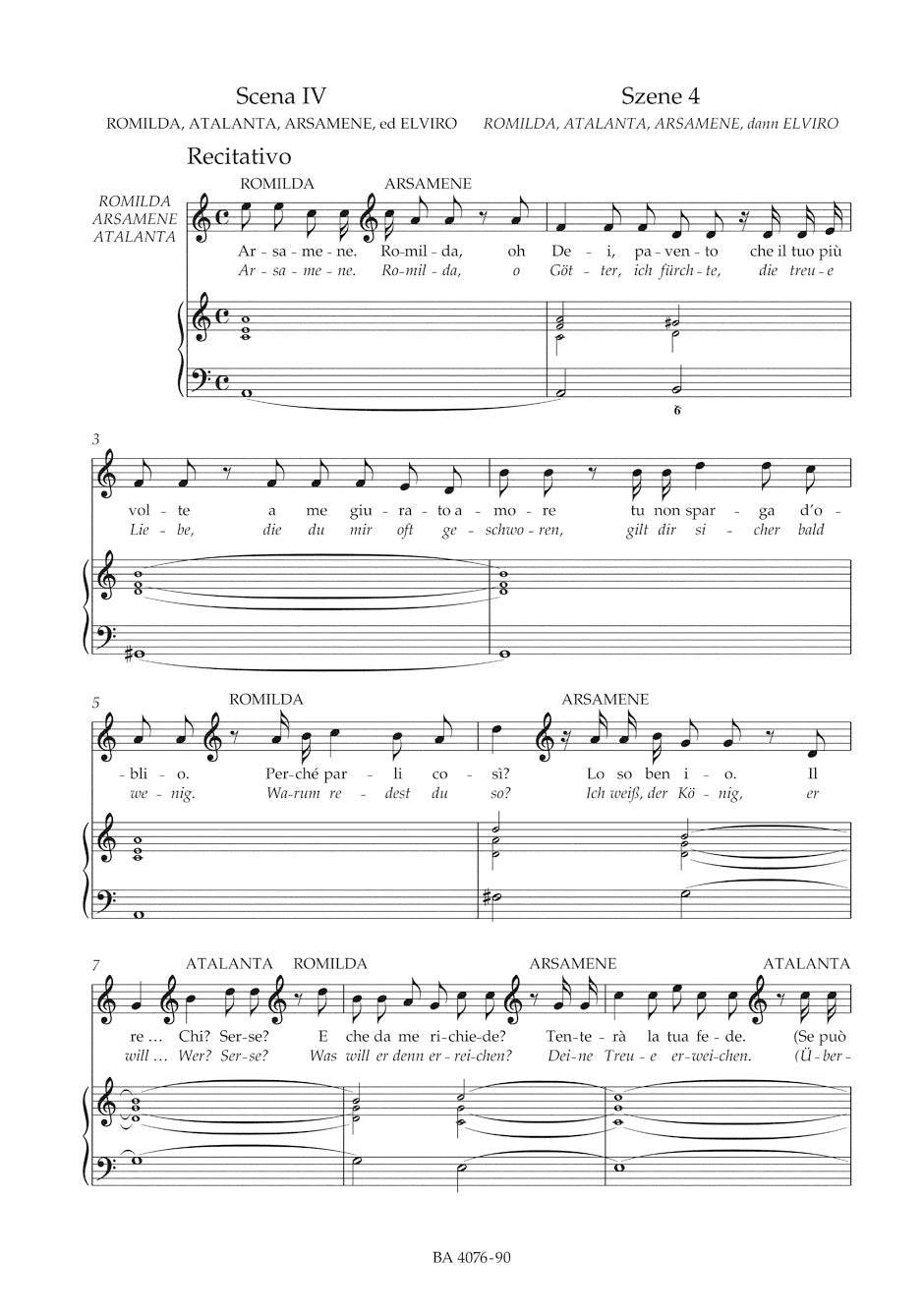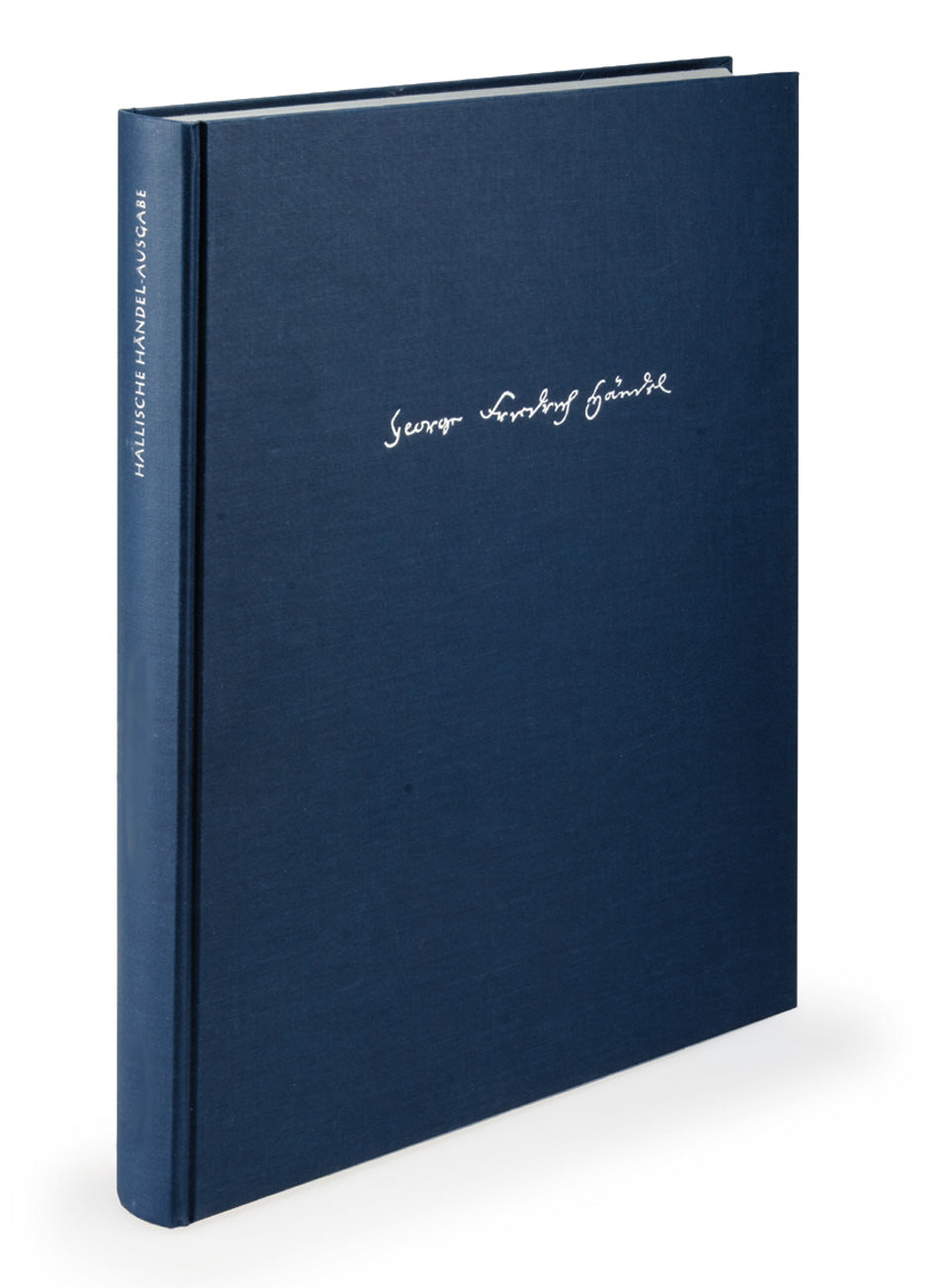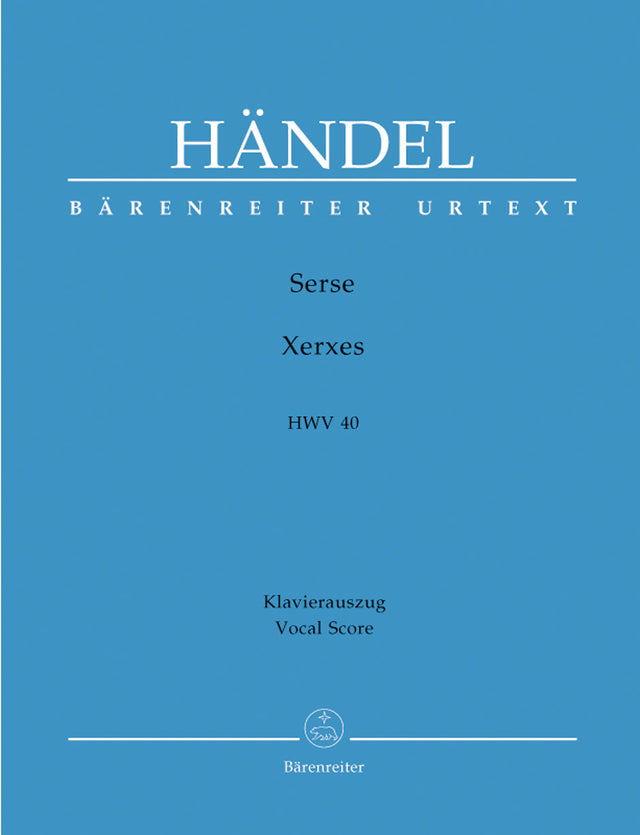Handel: Serse (Xerxes), HWV 40
Opera in 3 Acts
In stock and typically ships within 1 business day.
- Composer: George Frideric Handel (1685-1759)
- Editor: Terence Best
- Instrumentation: Opera
- Work: Serse (Xerxes), HWV 40
- Work Languages: German, Italian
- ISMN:
- Size: 7.5 x 10.6 inches
- Pages: 231
- Urtext / Critical Edition
Description
Handel started writing "Serse" on 26 December 1737 and completed the third act on 6 February 1738. The première took place on 15 April of the same year at the King's Theatre in the Haymarket. Four performances followed, after which the work was not heard again until 1924.
The opera focuses on the Persian king Serse , who, rather than serving as a military commander or statesman, appears at the centre of a highly complex love story. Handel provided an admixture of buffo elements (the antics of the servant Elviro , the stupidity of the soldier Ariodate ) to the standard ingredients of opera seria, such as the broadly declaimed woes of Serse, Romilda, Arsamene, and Amastre .
This interweaving of seemingly incompatible stylistic resources arose in Naples and can already be found in the 17th century librettos that served as the principal sources of Handel's Serse.
Though unsuccessful at the time, today "Serse" is prized precisely for its comic undertones and is regularly seen on stage.
Publishers use a lot of words to describe what they sell, and we know it can be confusing. We've tried to be as clear as possible to make sure you get exactly what you are looking for. Below are descriptions of the terms that we use to describe the various formats that music often comes in.
Choral Score
A score for vocalists that only contains the vocal lines. The instrumental parts are not there for reference. Generally, cheaper than a vocal score and requires multiple copies for purchase.
Facsimile
Reproductions of the original hand-written scores from the composer.
Full Score
For ensemble music, this indicates that the edition contains all parts on a single system (there are not separate parts for each player). In larger ensembles, this is for the conductor.
Hardcover
Hardbound. Generally either linen-covered or half-leather.
Orchestral Parts
Similar to a wind set, this is a collection of parts. In the case of strings, the numbers listed are the number of copies included, though generally these are available individually (often with minimum quantities required).
Paperback
When publishers offer multiple bindings (e.g. hardcover) or study scores, this is the "standard" version. If you're planning to play the music, this is probably what you want.
Performance / Playing Score
A score of the music containing all parts on one system, intended for players to share. There are not separate parts for each player.
Set of Parts
For ensemble music, this indicates that there are separate individual parts for each player.
Solo Part with Piano Reduction
For solo pieces with orchestra, this is a version that contains a piano reduction of the orchestra parts. For piano pieces, two copies are typically needed for performance.
Study Score
A small (think choral size) copy of the complete score meant for studying, and not playing. They make great add-ons when learning concertos and small chamber works.
Vocal Score
A score prepared for vocalists that includes the piano/organ part or a reduction of the instrumental parts.
Wind Set
For orchestral music, this is a collection of wind and percussion parts. The specific quantities of each instrument are notated.
With Audio
In addition to the printed music, the edition contains recordings of the pieces. This may be an included CD, or access to files on the internet.
With / Without Fingering (Markings)
Some publishers prepare two copies - a pure Urtext edition that includes no fingering (or bowing) suggestions and a lightly edited version that includes a minimal number of editorial markings.

